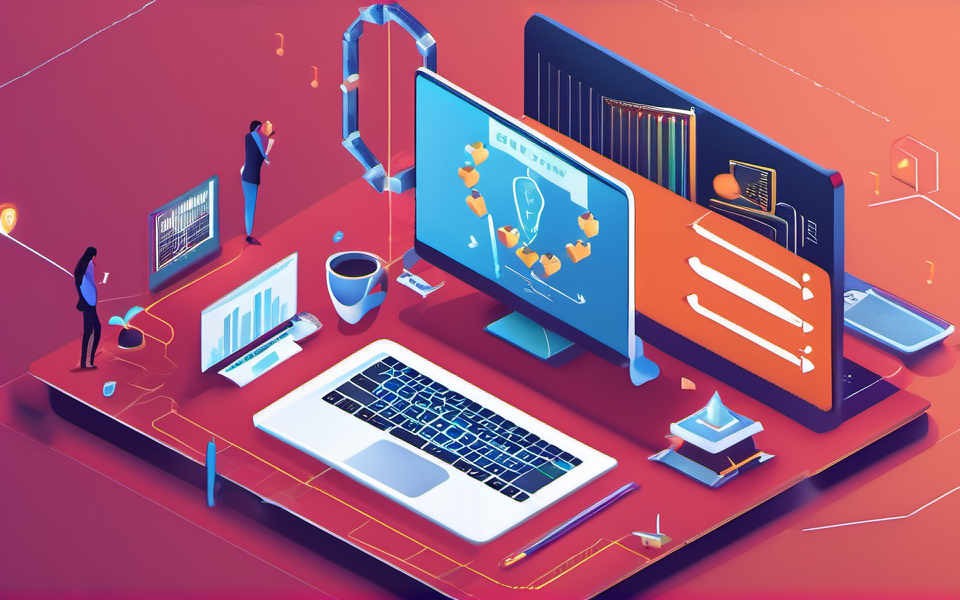Imagine this: You wake up one morning, grab your coffee, and go to check your emails, only to find your entire online life in ruins. Your social media accounts have been compromised, your business website is down, and your personal files have been stolen. It’s a nightmare scenario that’s becoming increasingly common in our digitally interconnected world. But it doesn’t have to be this way. There are powerful technical solutions for digital asset protection that can safeguard your online life and keep you safe from the growing tide of cyber threats.
The Evolving Landscape of Cyber Threats
The world of digital threats is constantly evolving. Gone are the days of simple phishing scams and spam emails. Today, sophisticated cybercriminals use complex tactics to infiltrate your devices, steal your data, and hold it hostage. From malware and ransomware attacks to social engineering schemes and data breaches, the landscape is becoming more treacherous by the day.
How to stay ahead of the curve?
It’s not just about knowing the latest threats but about taking proactive steps to strengthen your digital defenses. Think of it as building a digital fortress around your assets, a fortress with multiple layers of security that can adapt to the ever-changing cyber landscape.
Layering Your Defenses: Building a Fortress Around Your Digital Life
Protecting your digital life requires a multi-layered approach, and here’s how you can achieve it:
1. Firewalling your Fortress
Imagine a firewall as the first line of defense, a watchful gatekeeper that scrutinizes all incoming and outgoing network traffic. A strong firewall acts as a shield against unwanted intrusions and prevents unauthorized access to your sensitive data. Whether you are using a home or business network, a reliable firewall is an essential first step in fortifying your digital fortress.
Essential firewall features to consider:
- Network segmentation: This is where you divide your network into smaller, isolated sections to control data flow and limit the impact of potential breaches.
- Stateful inspection: Instead of simply examining data packets at a glance, it investigates the entire history of a connection to identify potential threats.
- Intrusion detection and prevention systems (IDS/IPS): These tools actively scan your network for suspicious activities and take action to block or mitigate potential attacks.
2. Secure Access with Multi-factor Authentication (MFA)
Multi-factor authentication is like having two doors guarding your valuable assets: one with a password and the other with a fingerprint. It’s an extra layer of security that requires users to provide multiple pieces of information before granting access.
Why it matters:
Even if your password is compromised, it’s harder for cybercriminals to gain full access without your secondary authentication factor, like a unique code from your phone or a fingerprint scan. Many websites and online services now offer this feature, and it should be your default security choice.
3. The Crucial Importance of Data Encryption
Think of data encryption as a digital safe that locks your sensitive information, keeping it inaccessible to unauthorized users. It transforms data into an unreadable format using a complex mathematical formula.
Why encryption matters:
Even if a cybercriminal gets access to your device or network, encrypted data becomes useless because it’s impossible to decrypt without the right key.
4. Keeping your Software Updated is Paramount
It’s like giving your digital fortress a constant upgrade, closing vulnerabilities and adding new layers of security. Every software update comes with security patches and bug fixes, which can significantly strengthen your defenses against new threats.
The best way to stay ahead of potential vulnerabilities?
Ensure you’ve enabled automatic updates for your operating system, applications, and web browser.
Investing in the Right Cybersecurity Solutions for Your Needs
With the threat landscape evolving rapidly, you need a comprehensive approach to safeguard your digital assets. This means investing in robust cybersecurity solutions designed to meet your specific requirements.
Here are a few types of cybersecurity tools to consider:
- Antivirus and Anti-malware Software: A basic but crucial line of defense that actively scans your devices for harmful threats like viruses and malware.
- Endpoint Detection and Response (EDR): This advanced technology goes beyond traditional antivirus, offering real-time threat detection, investigation, and response capabilities.
- Data Loss Prevention (DLP): DLP solutions can help detect and prevent unauthorized data transfers, protecting your confidential information from leaving your control.
- Vulnerability Scanning Tools: These tools automate the process of identifying and evaluating potential security vulnerabilities within your network or devices, enabling proactive patching and remediation.
The Takeaway: Embracing a Proactive Mindset
In today’s digital age, cybersecurity is not an option; it’s a necessity.
A proactive approach is key:
- Understand the latest threats.
- Invest in reliable cybersecurity solutions.
- Regularly update your software and systems.
- Practice safe online habits.
Protecting your digital assets should be a top priority. By adopting a multi-layered approach, implementing the right tools and staying vigilant, you can create a secure and impenetrable digital fortress that shields your valuable data from the threats that lurk in the cyber realm.




